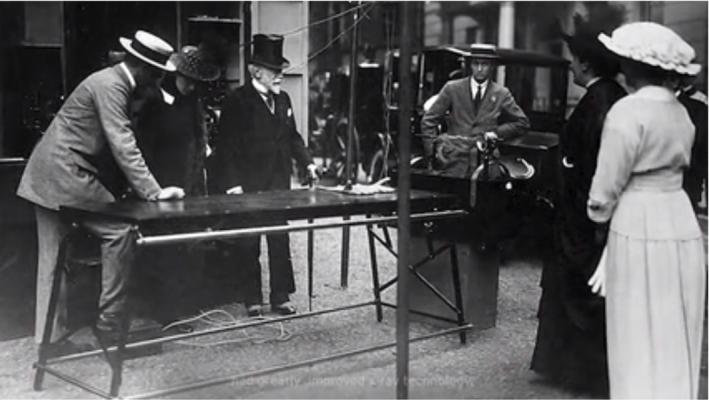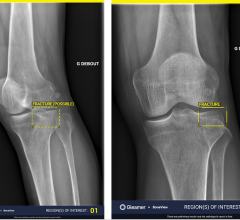
The anniversary of the discovery of X-Ray technology is commemorated annually on November 8 by the American Society of Radiologic Technologists (ASRT). An engaging film by ASRT Museum and Archives, “Evolution of the Profession,” documents the journey of that profession and the organization that has guided it through economic depressions, World Wars and global health pandemics. Image courtesy: ASRT.
November 8, 2023 — The American Society of Radiologic Technologists (ASRT) is encouraging the imaging community to recognize an important date for a vital discovery this week. In a written statement, the organization leadership noted, “It can be argued that the discovery of the X-ray by German physicist Wilhelm Conrad Roentgen on November 8, 1895, was one of the most significant milestones in healthcare. His accidental discovery forever changed medicine and it has been a key tool in diagnosing and treating injuries and diseases for 128 years.”
To honor Roentgen’s discovery of X-Ray technology, and recognize the vital work of medical imaging and radiation therapy professionals, the American Society of Radiologic Technologists is celebrating National Radiologic Technology Week (NRTW) from November 5-11, 2023. This year's theme for NRTW is focused on “Patients Are Our Passion; Safety Is Our Priority,” according to a statement issued by the Albuquerque, NM-based organization. ASRT also noted it represents 157,000 members who perform medical imaging procedures or plan and deliver radiation therapy, and is the largest radiologic science association in the world. Its mission is to advance the medical imaging and radiation therapy profession and to enhance the quality of patient care and health care safety.
Following is an excerpt from ASRT’s statement on the discovery’s history and significance:
The news of Roentgen’s discovery spread quickly and far beyond its intended use. The general public’s interest in the newfound ability to photograph the inside of the body fueled imagination that brought misunderstandings and quackery. Photography studios began offering bone portraits. Detectives reportedly used X-rays to determine if spouses were unfaithful. X-ray glasses were said to allow users to see through or into solid objects. X-rays were used metaphorically as entertainment in political cartoons, newspaper stories and advertising.
Despite early-day misunderstandings, only two months after its discovery doctors in Europe and the United States were using X-rays for clinical purposes, to identify broken bones, tumors and foreign objects. The discovery also paved the way for the development of radiologic science modalities used today like computed tomography, mammography, nuclear medicine, radiation therapy and many others. For his work, Roentgen was awarded the first Nobel Prize in physics in 1901.
According to the World Health Organization, there are an estimated 3.6 billion diagnostic X-ray examinations performed annually in hospitals, clinics and health care settings worldwide, noted ASRT. In addition, it offered there are more than 450,000 registered radiologic technologists in the U.S., the health care professionals who perform medical imaging and radiation therapy procedures; they make up the third-largest group of health care professionals surpassed in number only by physicians and nurses.
The ASRT Museum and Archives, located inside the ASRT office in Albuquerque, New Mexico, which traces the progress of radiologic technology, opened its doors in 2015, offering artifacts that manufacturers and advertisers in the early 1900s used to capitalize on the public’s fascination of the X-ray. Through interactive displays and educational exhibits, which can be viewed in a well-produced and comprehensive virtual tour on the ASRT website, the museum traces the progress of medical imaging and radiation therapy professionals from the discovery of the X-ray to today. Although many museums contain radiologic artifacts, this one is unique in that its mission is to deepen the appreciation and understanding of the radiologic technology profession and to inspire further learning. The mission of the museum is to deepen the appreciation and understanding of the radiologic technology profession and to inspire further learning.
More information: www.asrt.org


 April 14, 2025
April 14, 2025 








